If you are traveling to Rome, you likely are wondering how to visit the Sistine Chapel, one of the most famous landmarks in a city full of them.
The frescoes of the Sistine Chapel are considered to be one of Michelangelo’s masterpieces and a significant example of Renaissance art.
While the chapel is world-renowned, many travelers often do not realize that the Sistine Chapel is part of the Vatican Museums.
In fact, it is not possible to visit the Sistine Chapel on its own!
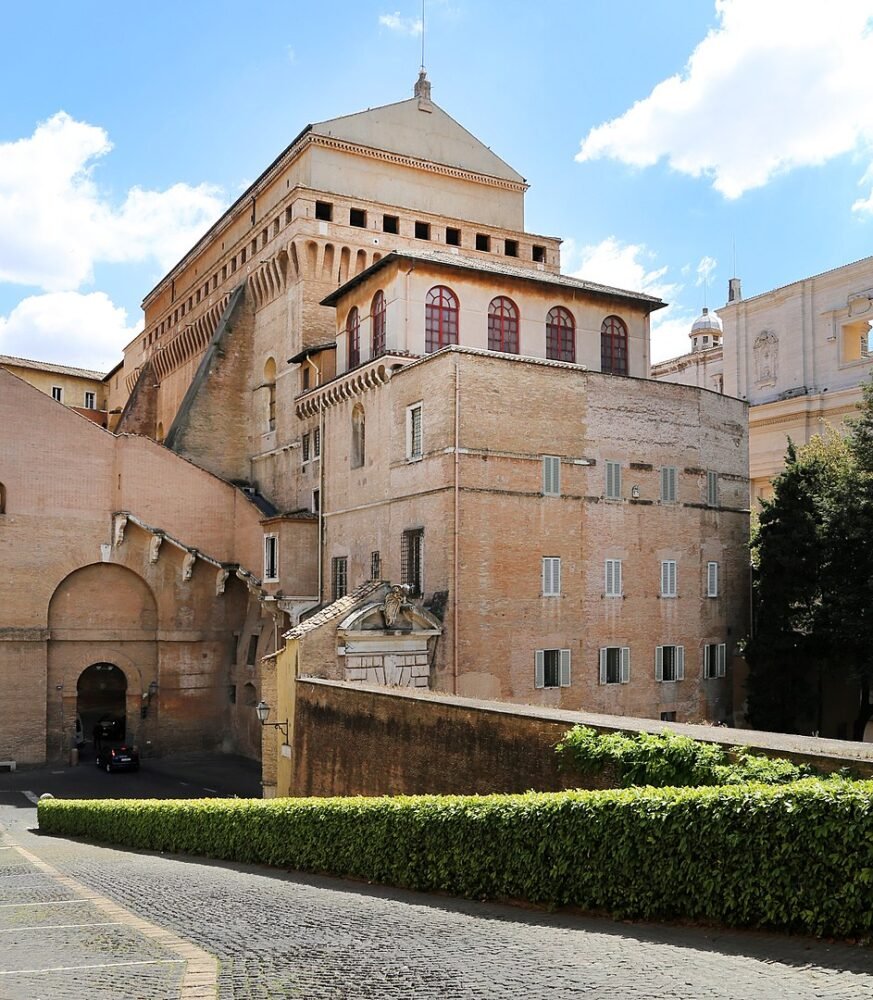
The only way to witness this magnificent work of art is by buying Vatican Museum tickets. There are no independent Sistine Chapel tickets.
Unlike other museums in Italy and the world, the Vatican Museums, and even more so the Sistine Chapel, have quite a few rules you must be aware of.
(We even have a full guide to visiting the Vatican Museums here, but this guide will focus more specifically on the Chapel itself)
In this article, you’ll find everything you need to know before you visit the Sistine Chapel, including its history, interesting facts about the frescoes, and important rules you must follow!
Whether you have one day in Rome or several on your itinerary, you simply must visit the Sistine Chapel while visiting Rome!
Table of Contents
History of the Sistine Chapel
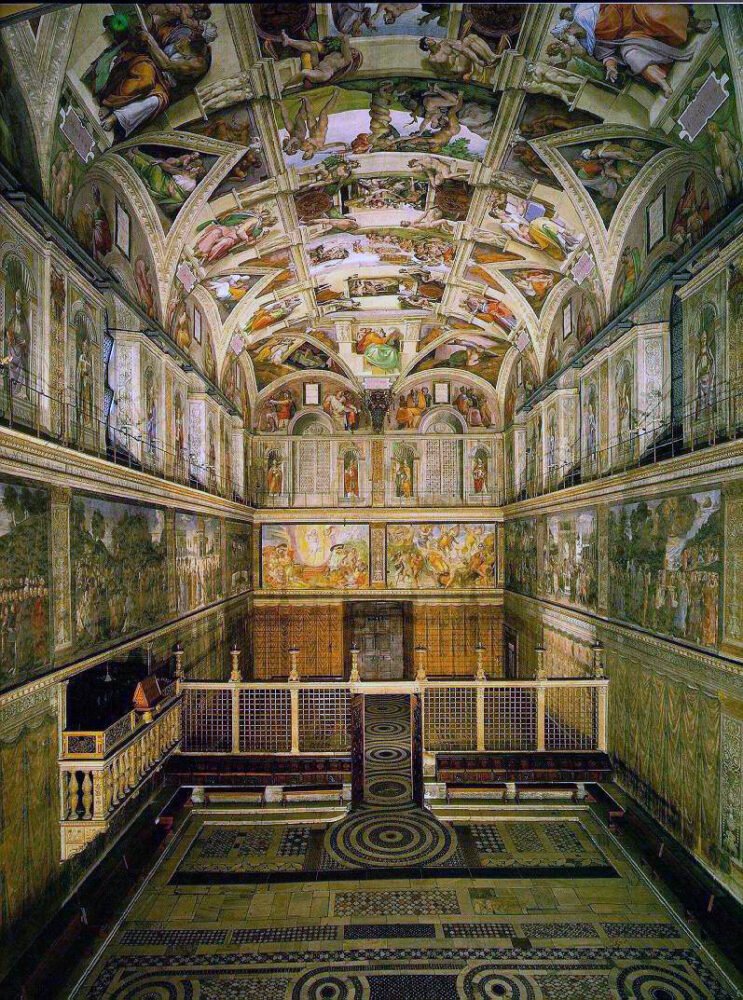
The Sistine Chapel is a part of the Apostolic Palace, the Pope’s official residence in Vatican City.
The chapel was originally known as Cappella Magna before Pope Sixtus IV ordered the restoration and decoration of the chapel in 1473.
The name was later changed to Sistine Chapel in honor of Pope Sixtus IV, a variation on his name.
In the first phase of the renovation, Pope Sixtus IV commissioned the painting of the chapel to a group of Renaissance painters, including Sandro Botticelli, Pietro Perugino, Domenico Ghirlandaio, and Pinturicchio, among others.
The painters created two series of fresco panels covering the walls on both sides of the altar.
These frescoes depicted the life of Moses and the life of Jesus Christ, one on each wall.
It took a whopping nine years for the painters to decorate the two walls!
In 1482, Pope Sixtus IV celebrated the first mass in the chapel on August 15th, on the Feast of the Assumption.
It was nearly three decades later, in 1508, that Pope Julius II commissioned the decoration of the vault to Michelangelo.
Funny enough, Michelangelo initially rejected the commission — yes, the very one that made him so famous!
At the time, he was mainly a sculptor and had little experience with frescoes, a relatively new technique.
In addition to that, he was working on Pope Julius II’s marble tomb at the time and wanted to finish the work.
Another reason for Michelangelo’s wavering to accept the big commission was his suspicion that his rivals had recommended him because they wanted to see him fail.
(Well, if that was the case, his rivals must have been extremely disappointed upon seeing the magnificent result!)
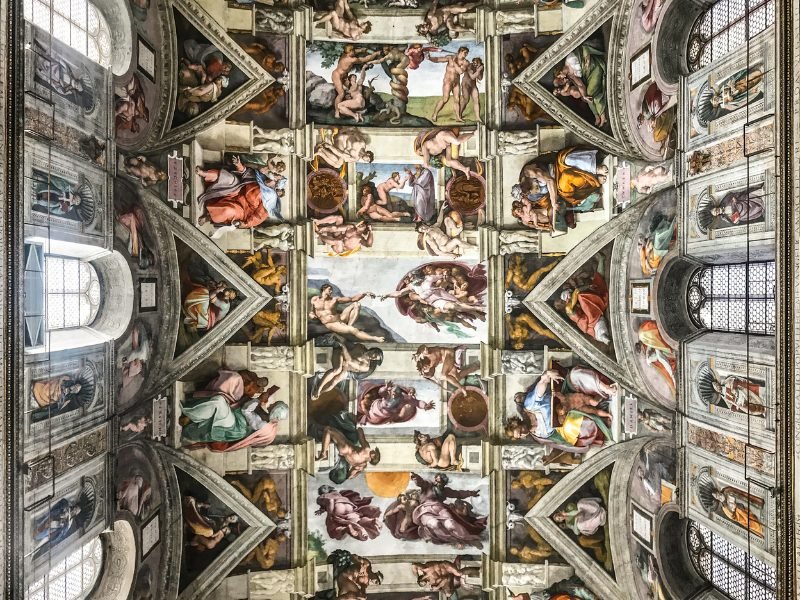
Over the following four years, the artist painted what would soon become one of the most important works of Renaissance painting, admired by millions over the following centuries.
However, Michelangelo found that he did not enjoy decorating the Sistine Chapel ceiling!
In a letter to a friend, he complained about the work and mentioned feeling out of place, as he did not consider himself a painter.
Several years later, between 1536 and 1541, Michelangelo painted the fresco depicting the Final Judgement on the altar wall.
This work also posed several obstacles, including the need to remove a previous fresco of the Assumption of Mary by Pietro Perugino.
Finally, Michelangelo accepted the task after he was given creative space to use his fantasy in the fresco.
With the painting of the altar wall, the Sistine Chapel was finally completely decorated!
Since 1870, the Sistine Chapel is the seat of the conclave, the official meeting during which cardinals choose a new pope.
The newly elected pope is then led into a small room to the left of the altar, known as the “Tears Room” because new popes often shed tears of joy once they have been elected.
The election of the new pope is signaled by the smoke coming out of a chimney on the roof of the Sistine Chapel.
White smoke means a new pope has been elected, while black smoke means there has been no election yet due to the lack of a majority of two-thirds as required.
The Art of the Sistine Chapel
In the Sistine Chapel, you’ll get to admire four main artworks.
You’ll find the the ceiling and altar wall frescoes by Michelangelo, and the two side walls by a group of Renaissance artists, depicting two different Biblical themes.
Sistine Ceiling
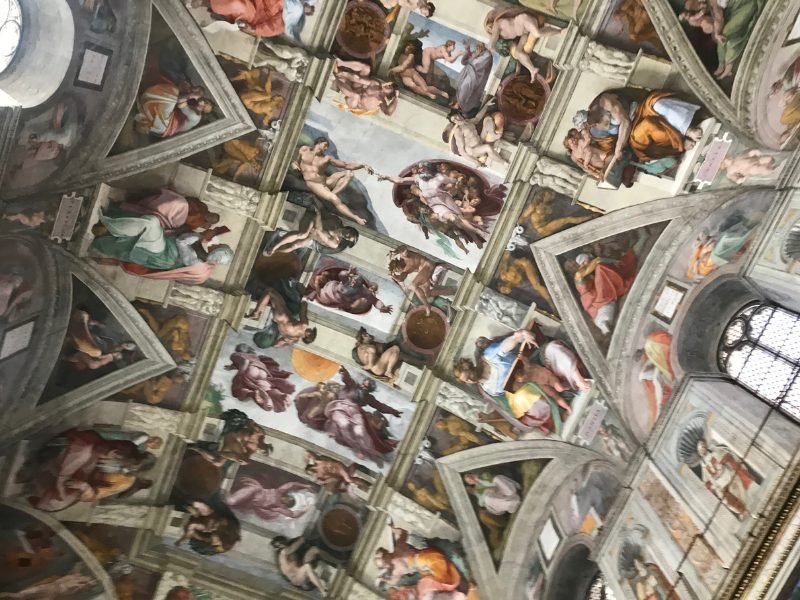
Before Michelangelo painted his masterpiece, the ceiling of the Sistine Chapel was decorated with a simple blue sky with golden stars.
Michelangelo’s first work in the Sistine Chapel focused on scenes from the Book of Genesis.
The frescoes begin with the Creation of the World and end with Noah and the Flood.
The first panel Michelangelo painted was the one of Noah, in which the figures appear smaller.
In the following panels, the figures became increasingly larger, as the artist realized they could not be properly enjoyed.
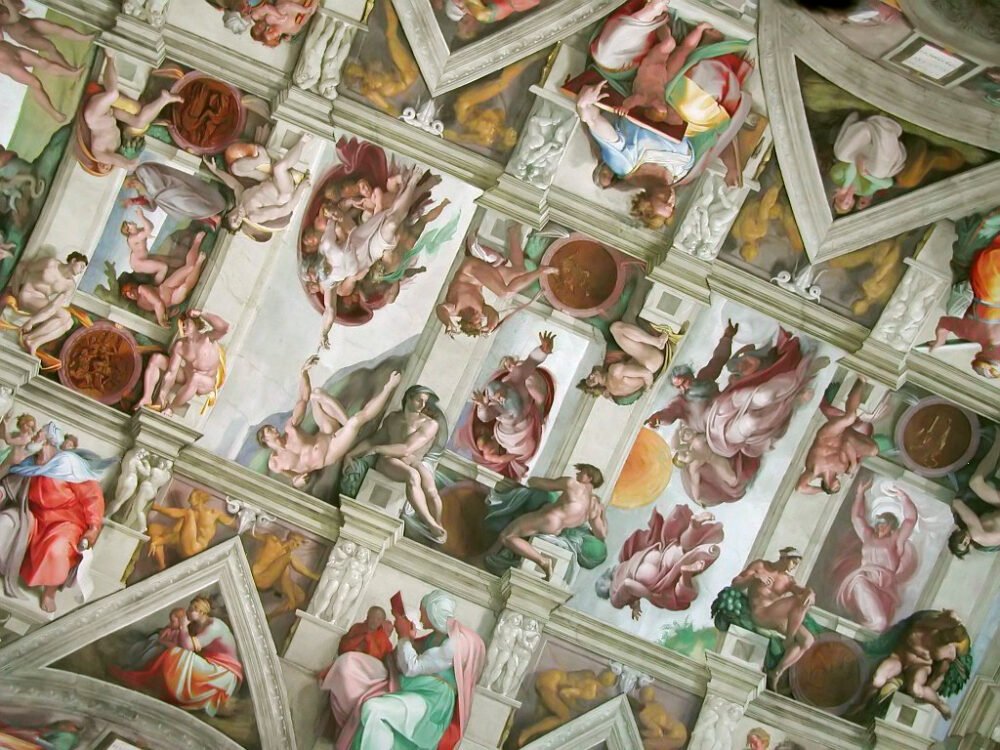
Two of the most significant panels of the Sistine Ceiling are the Creation of Adam and the Fall of Adam and Eve — two biblical stories of Genesis, with which many of us are familiar!
The creation of Adam is by far the most evocative image of the Sistine Chapel.
Many scholars have studied the image, including Dr. Frank Lynn Meshberger, who suggested that the shape of the drapery surrounding God and the angels resembles a human brain!
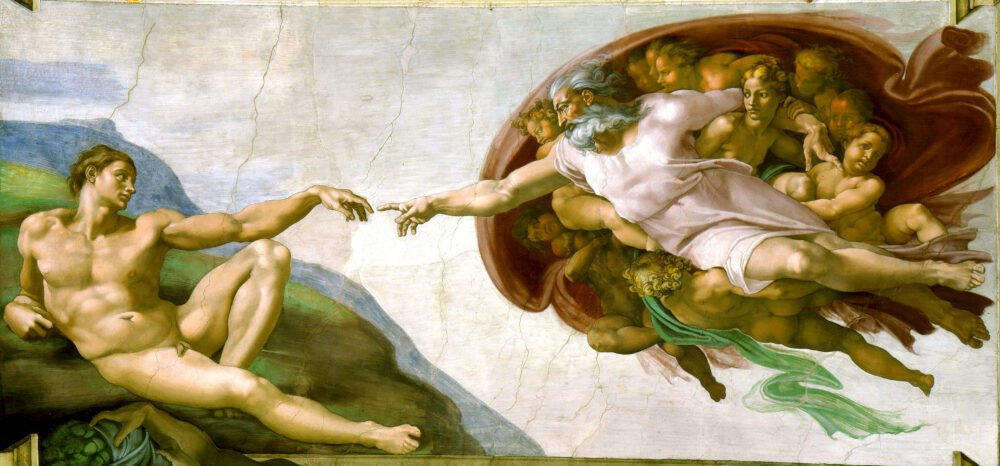
Some have interpreted Michelangelo’s painting as symbolizing God was bestowing the gift of intellect upon Adam.
The simplicity of the figure of God was another aspect of this fresco that provoked many discussions.
For the first time, God was depicted as an old man dressed in a simple tunic and within reach.
By stretching his hand towards Adam, he gives life to him, and through him, to all mankind.
The image is in keeping with the idea that God created Man in his image and likeness.
Altar Wall: The Last Judgment
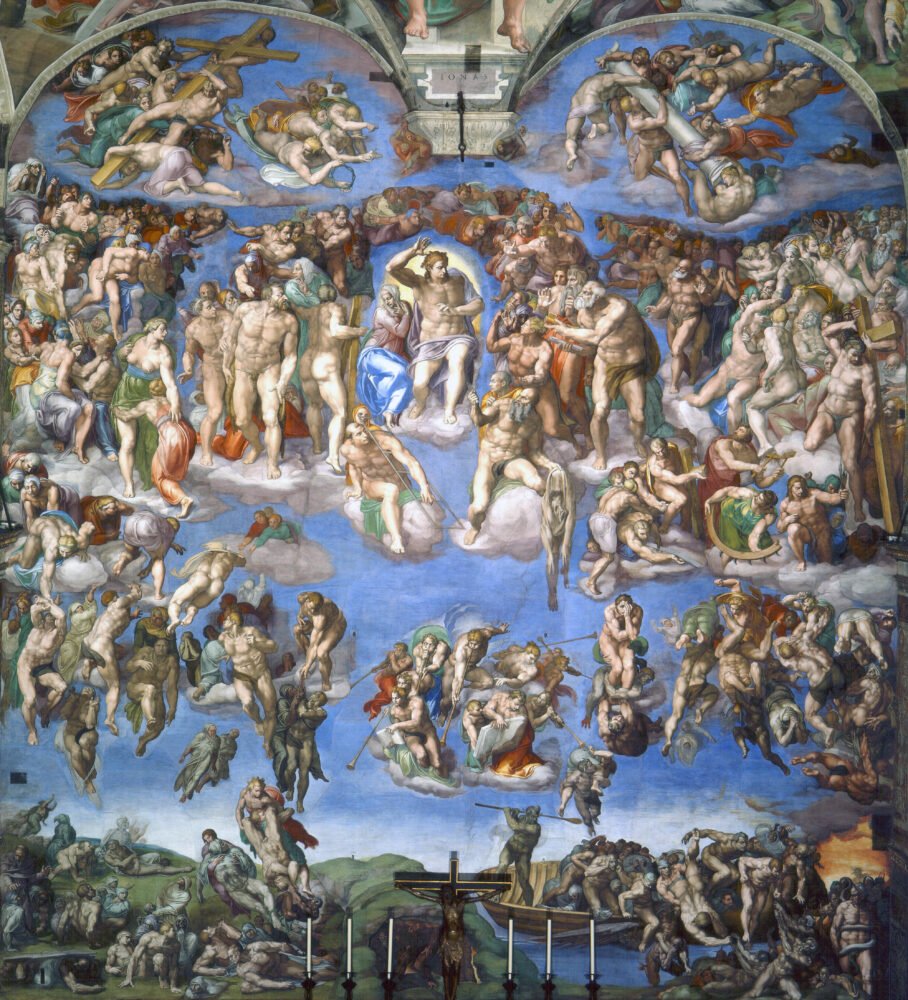
The fresco that covers the entire wall behind the altar is as significant as the Sistine Ceiling!
By the time Michelangelo returned to paint the wall, he was already more confident — so much so that this particular fresco contains several controversial elements.
The fresco represents God’s final judgment of humanity, or in other words, Doomsday.
Over 300 figures cover the wall, with Christ and the Virgin Mary by his side occupying the center of the fresco.
The figures surrounding Christ are the most important saints.
One of them, Saint Bartholomew, is particularly significant as he holds his flayed skin — which, interesting, is said by many to be Michelangelo’s self-portrait.
On the left side of the wall, the Saved are ascending to Heaven, many of them helped by angels.
On the right side, the damned are descending into Hell, supervised by Minos. In a boat rowed by Charon, many souls are being ferried to the Underworld.
Even before being completed, Biagio da Cesena, assistant to Pope Paul III, commented that the fresco was disgraceful in showing nude figures in a religious place.
A petty king, Michelangelo didn’t waste time getting his revenge — he painted Biagio da Cesena as Minos, depicted with donkey ears!
Even after Biagio da Cesena, the fresco was severely criticized for the extremely muscular and mostly naked bodies depicted.
Throughout the years, many artists were commissioned with the task of covering naked bodies, though they did so only partially.
Most alterations were removed during the restoration works of the 1990s and remain true to Michelangelo’s original vision.
Aside from the ceiling, Michelangelo also painted the pendentives (the curving semi-triangular parts formed where domes and arches meet) along the sides and at both ends of the ceiling.
In these pendentives, Michelangelo included frescoes of the seven prophets of Israel and five Sibyls, who were prophetic women in classic mythology.
In the corners of the chapel, the triangular pendentives are decorated with biblical stories: David and Goliath, Judith and Holofernes, The Brazen Serpent, and The Punishment of Haman.
Many other religious and mythological figures are depicted in other areas connecting the walls to the ceiling.
Side Walls: Life of Christ and Life of Moses
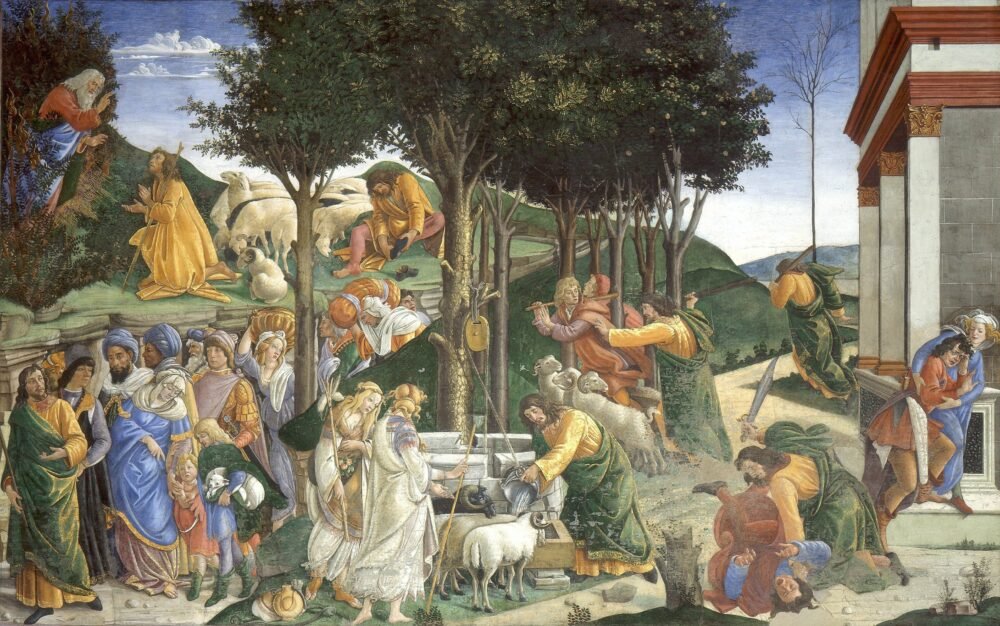
The wall depicting the life of Christ was painted by a group of Renaissance-era artists.
Those artists included Perugino, Pinturicchio, Sandro Botticelli, Domenico Ghirlandaio, and Cosimo Rosselli.
In addition to these, other renowned painters that contributed to the frescoes on the life of Moses were Benedetto Ghirlandaio, Luca Signorelli, and Bartolomeo della Gatta.
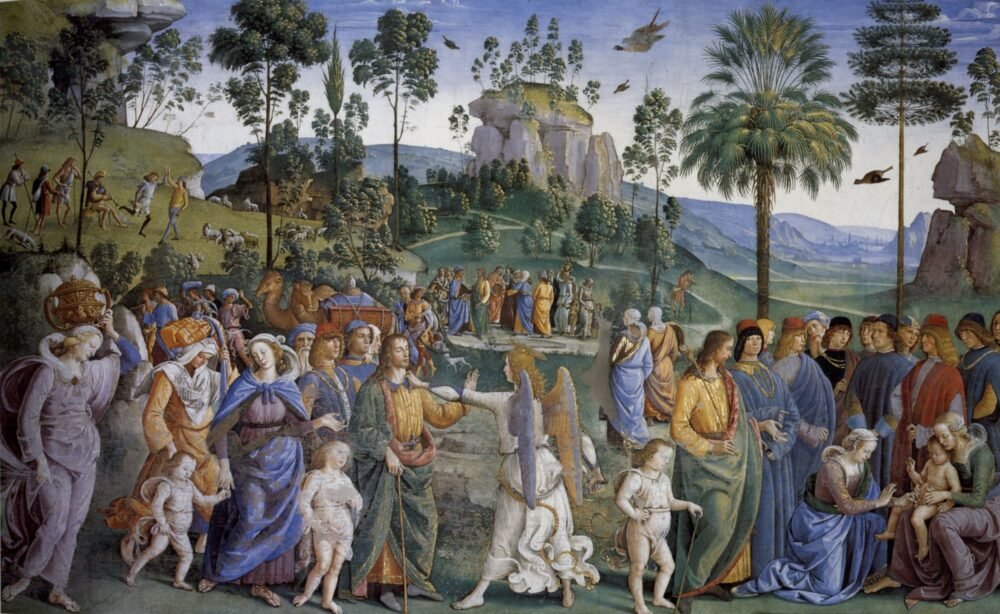
The most important scenes represented are the Baptism of Christ, Moses’s Journey into Egypt and the Circumcision of His Son Eliezer, and Christ Handing the Keys to St Peter.
Above the main frescoes, the smaller spaces between the windows are covered in frescoes of various popes.
Best Time of Day to Visit for Fewer Crowds
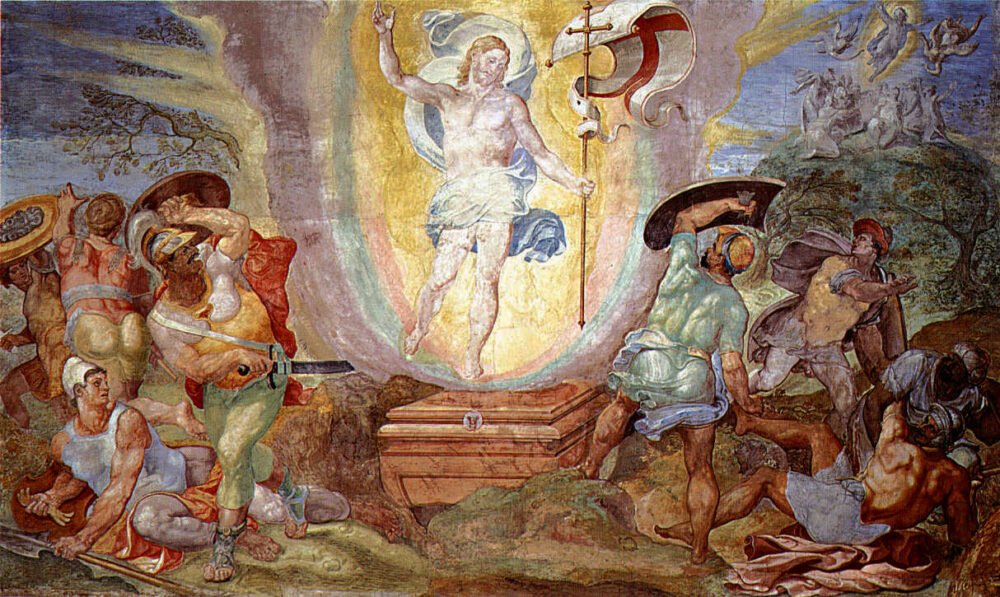
Being the highlight of the visit to the Vatican, the Sistine Chapel can get very crowded!
The chapel is also the final attraction of the Vatican Museums tour and the place where people tend to spend the most time.
If you wish to see the Sistine Chapel with fewer crowds on a regular tour, book your visit at the first available hour or near closing time.
While this does not guarantee seeing it completely crowd-free, you’ll likely find fewer people.
Even with skip the line tickets, you’ll still find the Sistine Chapel quite busy, as these Vatican tour times are open to the general public and have a higher capacity.
The best way to enjoy the Sistine Chapel with significantly fewer crowds is to book an early or night tour, which are more exclusive and have limited capacity.
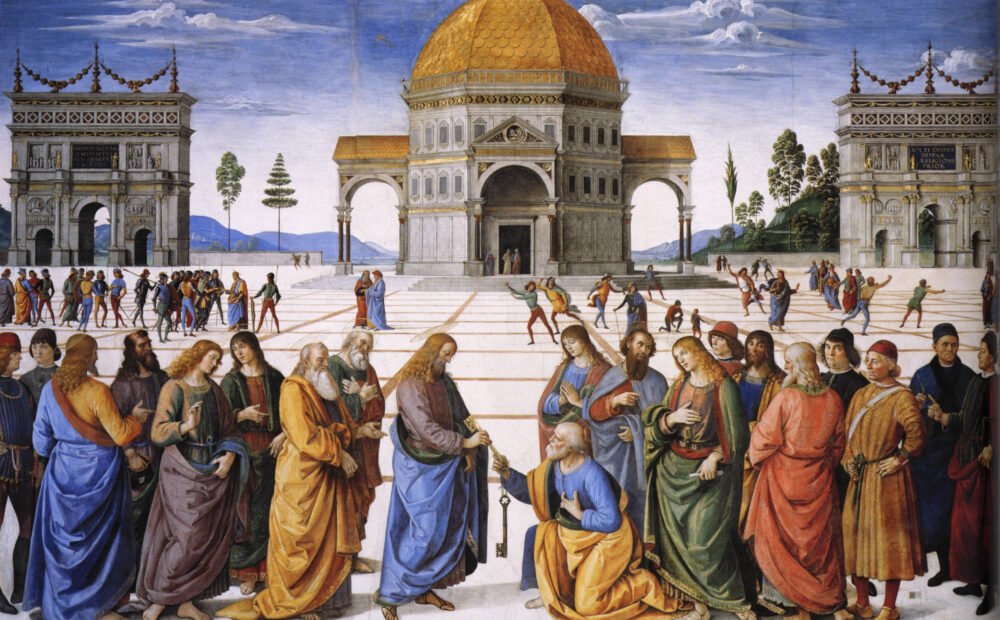
With the early morning Sistine Chapel and St. Peter’s Basilica tour, you’ll enter the Vatican Museums at 7:30 AM, much earlier than the regular opening time.
You can choose between shared group tours (they keep the group size rather small) or a private tour.
Both options offering the opportunity to enjoy the Sistine Chapel without crowds or long lines.
However, you will have a tour guide, so you’ll be going at their pace vs. your own pace.
When it comes to early access tours, you can choose between a shared group or a private tour, with both options offering the opportunity to enjoy the Sistine Chapel without the typical crowds.
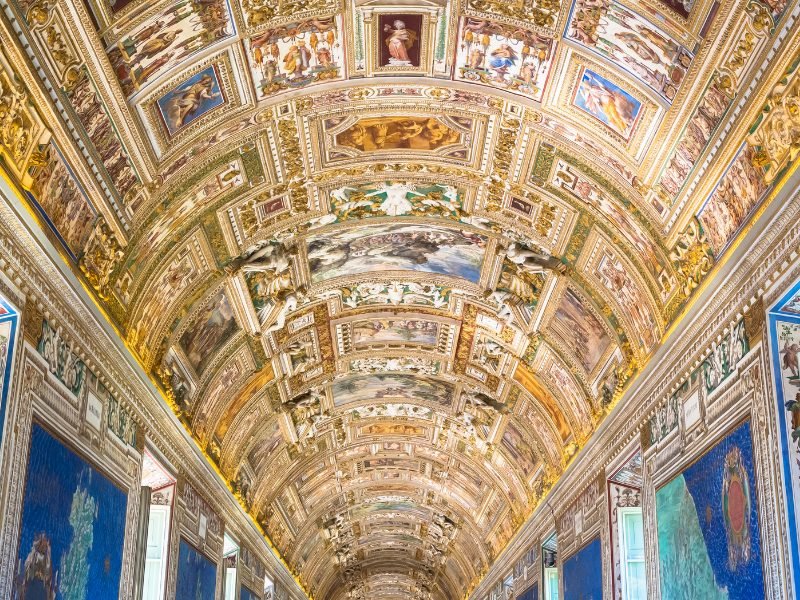
Besides the Sistine Chapel, the morning tour also includes visiting several rooms of the Vatican Museums, including the Candelabra Gallery, the Gallery of Tapestries, and the Gallery of Maps, as well as St. Peter’s Basilica.
If you’re not much of an early bird, don’t worry, there are options for you too to see the Sistine Chapel without a million people in the way!
The night tour of the Vatican Museum and Sistine Chapel is a three-hour guided tour starting right after closing time.
The departure times vary depending on what group size you go with (10, 20, or 30 people), but typically between 6:00 PM and 7:30 PM.
I suggest going on the later side — there’s a 10-person group starting at 6:55 PM or a 20-person group at 7:30 PM.
Like on the morning tour, you can see the wonderful Vatican Museums and admire the Sistine Chapel without being overwhelmed by hundreds of other visitors sharing the same limited space.
This tour of the Vatican Museums and Sistine Chapel also includes the famous galleries mentioned above as well as the well-known and stunning Raphael Rooms.
Dress Code for the Sistine Chapel
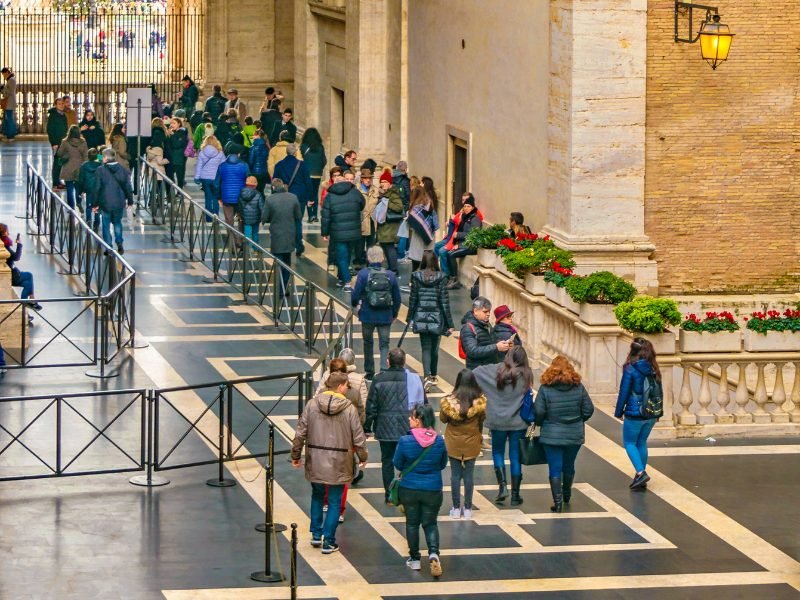
Given the location of the Sistine Chapel inside the Vatican, which is a religious state (and incidentally, the smallest country on earth!), you need to observe a dress code.
Here are a few tips on how to dress when visiting the Vatican Museums and Sistine Chapel:
- Make sure your shoulders are covered. In summer, you can bring a light scarf or cardigan to cover your shoulders if you wear a top. Alternatively, wear a short-sleeved t-shirt or blouse.
- Avoid wearing shorts, miniskirts, or short dresses. The key here is that they need to cover your knees.
- Cover possible tattoos of religious symbols or anything that may be deemed offensive to the Christian religion.
- If you’re wearing a cap or hat, remember to remove it indoors.
- Avoid see-through clothes, crop tops, and revealing clothing in general.
Prohibited Items and Other Rules
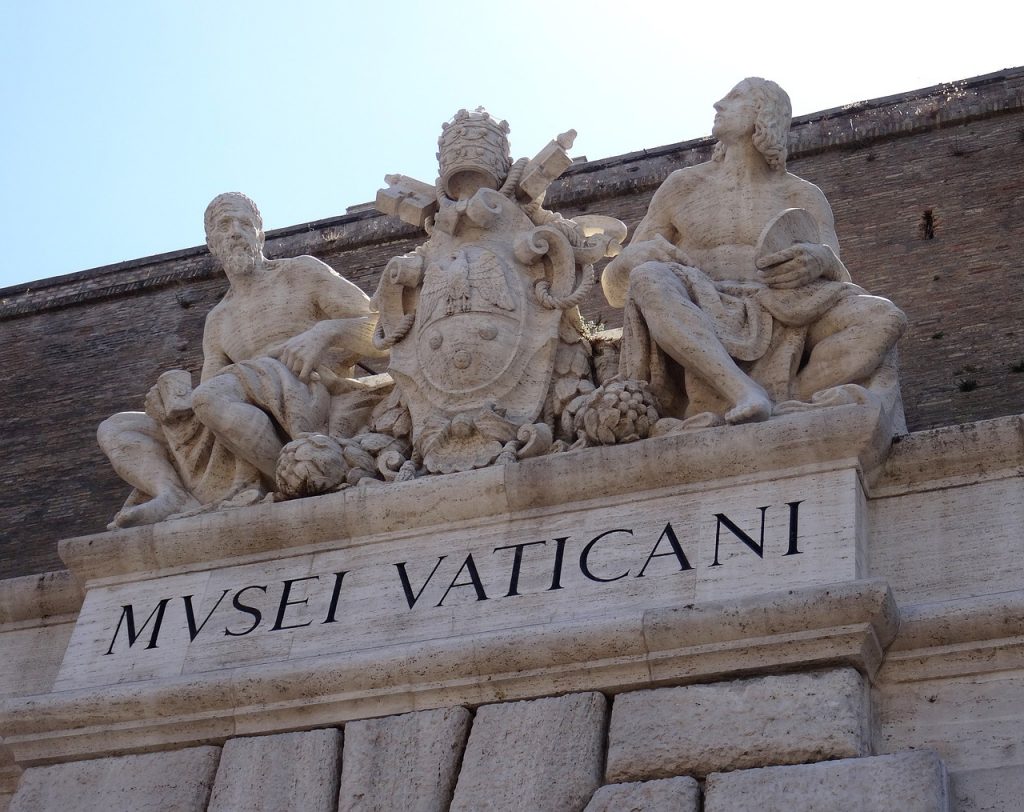
Before visiting the Sistine Chapel, you should ensure you are not carrying any forbidden items.
The Vatican is pretty strict and specific as to which items are not allowed, so take note when planning your visit.
Note that you will go through airport-style security checks, so you’ll want to make sure you adhere to all their rules.
You must leave large bags, backpacks, or trolleys in the cloakroom without leaving any valuables inside them.
You may carry a small backpack or bag inside the museums.
However, pay attention if you plan on visiting Saint Peter’s Basilica at the end of the tour!
If that is the case, you should avoid leaving your bags in the Vatican Museums cloakroom, as you’ll exit from the Basilica and can’t re-enter the museum.
If needed, find luggage storage near Saint Peter’s.
The following are the items you are forbidden to carry inside the Vatican Museums:
- Knives, scissors, and other sharp metal objects
- Firearms and dangerous materials
- Medium and large umbrellas (in particular, ones that don’t fold up)
- Sticks, including selfie sticks. Walking sticks are permitted.
- Video cameras, lasers, amplified microphones
- Banners and any type of signs
- Alcoholic drinks and food
- Electronic cigarettes
No glass bottles are allowed inside the Vatican Museums either.
However, you may bring a plastic bottle, and you will even find fountains to refill it.
Finally, you must note that smoking is forbidden in the Vatican Museums.
You should also keep the phone on silent mode, to avoid disturbing the other visitors.
Rules in the Sistine Chapel
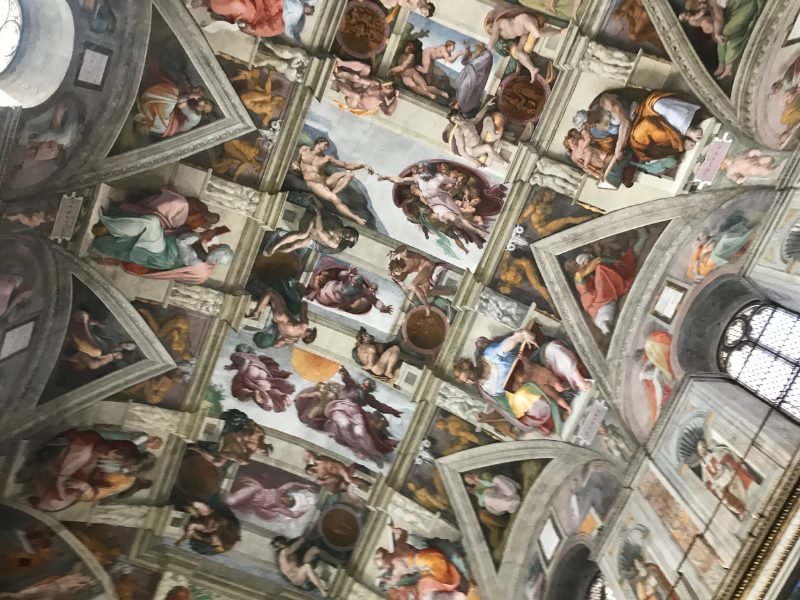
Aside from the rules above, which apply to all areas within the Vatican Museums, you must follow a few extra rules inside the Sistine Chapel:
- You are not allowed to take any photograph or video, with or without flash
- You should maintain silence while inside the chapel
- You should avoid using your phone entirely
Although they may seem slightly ridiculous, these rules are strictly reinforced.
The museum guards will shush you if you speak, and they will tell you to put your phone away.
Take this as an opportunity to fully enjoy being in this magnificent place and simply admire the artwork.
Even if you can’t capture the chapel on your phone camera, you will remember the experience for a long time!
Photography Rules in the Vatican Museums
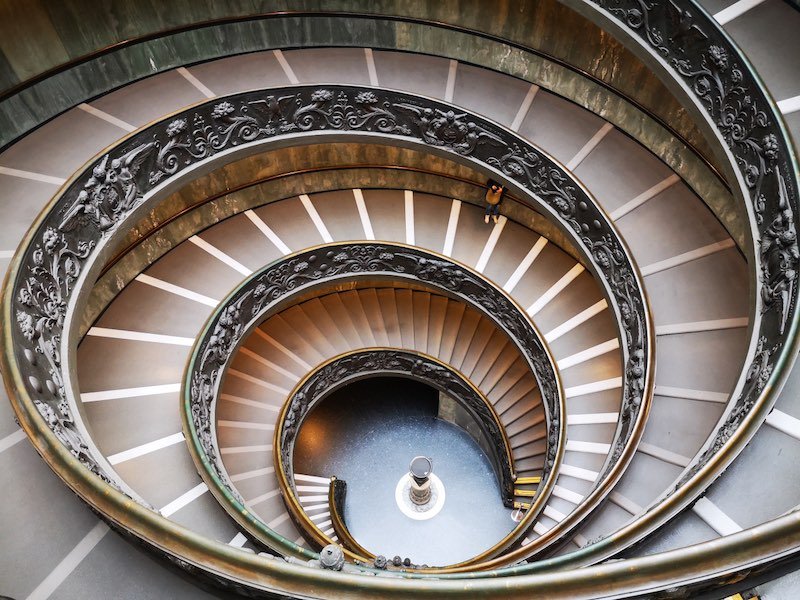
Photography is allowed throughout the Vatican Museums, except for the Sistine Chapel. However, you must respect a few simple rules:
- Photos are for personal use only
- You are not allowed to use the flash
- You are not allowed to use a tripod, selfie stick, drone, or other professional photography equipment
This should have you covered for your visit to one of the most awe-inspiring places you’ll ever visit!
Although a visit to the Vatican Museums is worth even just to see the Sistine Chapel, make sure you don’t rush through the other rooms to get to the end.
There is much to be discovered within the walls of the smallest state in the world!
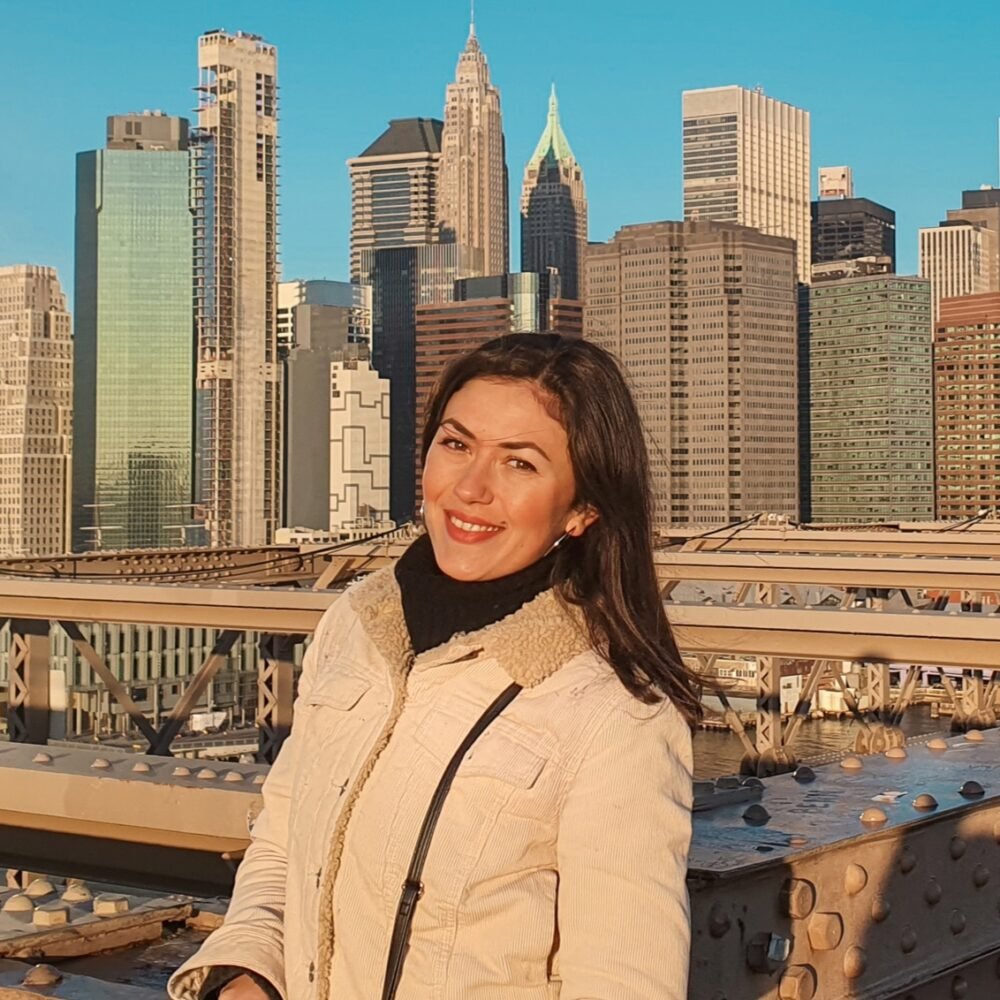
Roxana is a Romanian-born freelance travel writer who has lived in Italy for over 15 years. She has a Master’s in Journalism and a Bachelor’s in Film Studies, and she studied at Università degli Studi di Roma Tre. Besides her native Romania, Roxana has lived in Rome, Lisbon, and Berlin, and she has traveled through much of Europe in search of hidden gems, history, and culture.